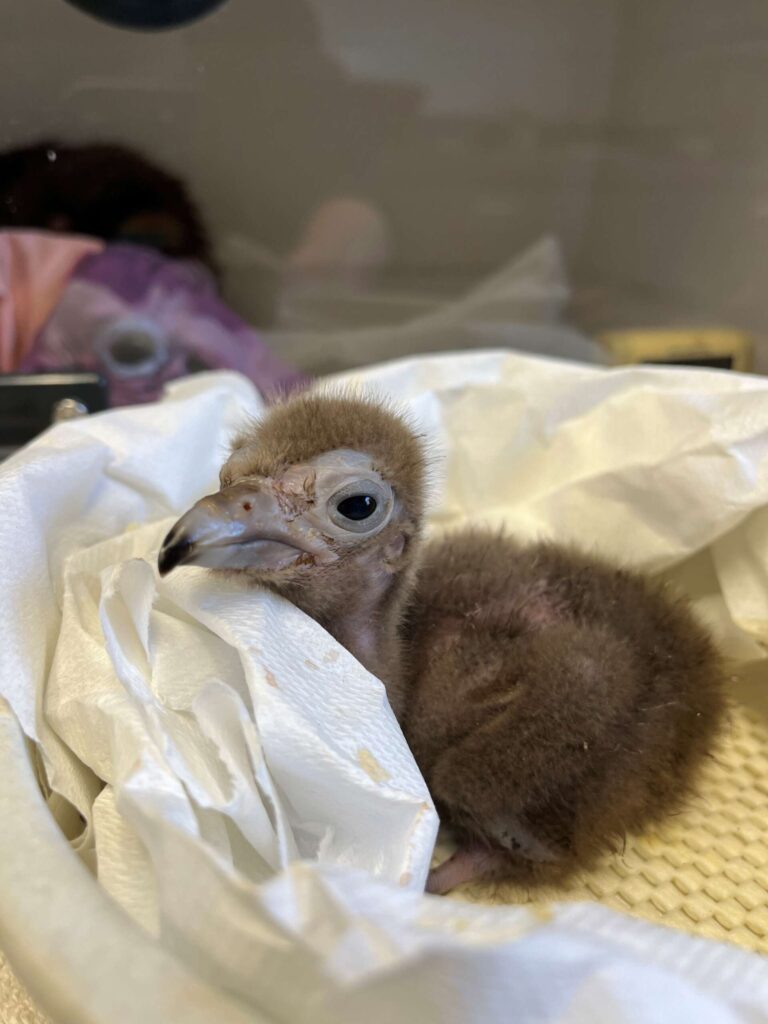Zoo Atlanta contributes to hooded vulture conservation by fostering chicks from genetically valuable pairs in other AZA-accredited zoos. The SSP evaluates and recommends breeding and relocation of hooded vultures every three years based on habitat space, genetics, and zoo interest. Zoo Atlanta‘s four hooded vultures are not recommended to breed due to their genetics, but the Bird Team has expertise in breeding them. They fostered a hooded vulture chick from a genetically valuable pair at the Dallas Zoo by removing the egg from the pair, artificially incubating it, and hatching and hand-rearing it at Zoo Atlanta. The chick was then given to a foster parent pair at Zoo Atlanta, Tai and Acacia, who have been raising it successfully.
Introduction
Fostering a hooded vulture chick can be a challenging but rewarding experience. These scavenger birds are critically endangered, and every chick saved can make a difference in preserving their population. In this article, we will discuss what is involved in fostering a hooded vulture chick, from preparation to release.
Preparation
Before taking in a hooded vulture chick, it is essential to have the proper permits and licenses. These birds are protected, and it is illegal to keep them without authorization. Contact your local wildlife authority to obtain the necessary documents and information on fostering a hooded vulture.
It is also crucial to have the right facilities for the chick. Hooded vultures need a secure, enclosed outdoor aviary to learn how to fly and fend for themselves. Provision of proper diet, a perching area, and adequate environmental conditions are necessary for these birds’ survival.
Fostering a hooded vulture chick should be a joint effort between recognized conservation organizations and licensed rehabilitators. If you are not sure how to get involved, contact your local birdwatching or conservation group for advice.
Fostering
Once the permits are in place, the fosterer needs to obtain the chick. If the chick was found abandoned or injured, rehabilitation centers and conservation organizations can provide suitable chicks. The chick’s age, gender, and health will determine the type of care the chick needs.
Hooded vulture chicks need to be fed a balanced, protein-rich diet of meat and bones to ensure they develop their natural scavenger instincts. Hand-feeding, assisted feeding, and feeding dead rodents or carcasses are commonly used.
Fostering a hooded vulture chick involves significant time and commitment. The chick needs constant attention and care, especially in the first few weeks. Fosterers need to watch for any signs of ill health, such as vomiting, lethargy, or changes in appetite, and intervene promptly.
Release
When the chick is ready to be released, fosterers must work with recognized conservation organizations to ensure a safe and successful release. Hooded vultures need to be released in groups so they can learn from each other and establish social hierarchies. Often, the release involves using soft release techniques, such as a hack tower or pre-release enclosure, to gradually acclimate the chick to the wild.
Monitoring the chick after release is crucial to assess its success in adapting to the wild. Fosterers can follow the chick’s progress through telemetry, observations, or regular updates from conservation authorities.
Conclusion
Fostering a hooded vulture chick can be an enriching and rewarding experience for anyone interested in bird conservation. The process requires careful planning and extensive resources, but the satisfaction of knowing that you are playing a significant role in saving a critically endangered bird species makes it worth the effort. Remember that fostering is not for everyone, and if you are unsure if you can commit to the process, consider volunteering at a rehabilitator or conservation organization. Every little step counts in preserving these majestic birds of prey.


